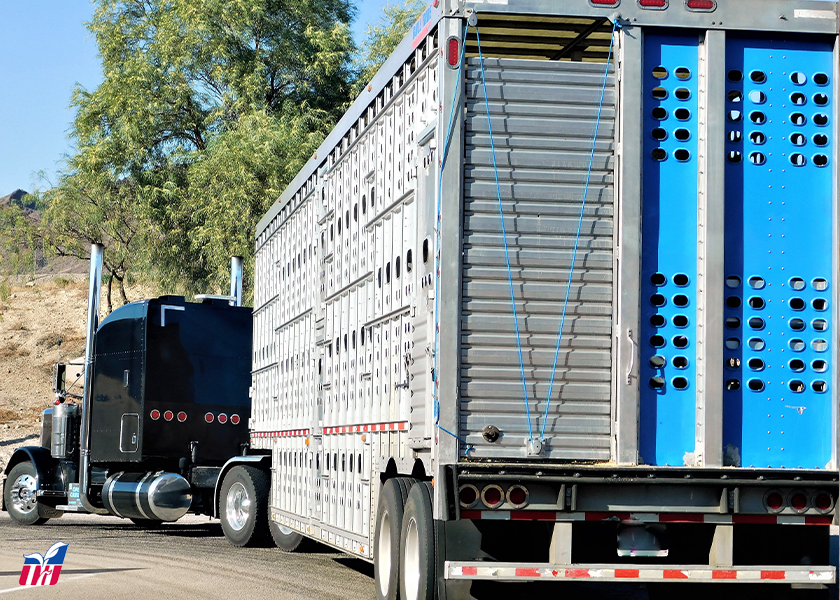Livestock Analysis | February 29, 2024

Price action: Hog futures turned higher after testing support early in Thursday’s session. Nearby April rallied 62.5 cents to $86.625.
Fundamental analysis: Although the seasonal advance is slowing, the cash hog and pork markets are still working higher. As expected, Tuesday’s official quote for the CME hog index rose 13 cents to $79.91, matching Wednesday’s calculation. That same calculation puts yesterday’s unofficial quote another 24 cents higher at $80.15. Pork cutout ended Wednesday poorly ending the day down $1.53 to $90.34 on big pork belly losses, but rebounded modestly, up 16 cents, to $90.50 at noon today, with sizeable loin and picnic gains offsetting losses in the other cuts.
Bears are likely betting on the traditional hog/pork market habit of trading sideways to lower from a midwinter high into early spring, but we are aligned with the bullish camp anticipating sustained strength. We don’t doubt that hog supplies will continue running ahead of last year’s relatively elevated totals, but underlying supplies and hog slaughter are declining on a seasonal basis. Indeed, that trend will almost surely persist until supplies reach annual lows in early summer. The onset of grilling season often coincides with the more-clearly defined post-Easter tendency for supplies to drop, which powers the usual spring rally. We believe the industry is maintaining wholesale and retail prices at levels conducive to strong demand from export customers and domestic consumers and think that demand will continue supporting the complex through much of March.
Technical analysis: The short-term technical situation still favors bulls in nearby April hog futures. Bears proved unable to sustain today’s early dip below the 10-day moving average near $86.11. Initial support at that level is reinforced by the daily low at $85.875, along with recent highs and lows in the $85.50 to $85.35 area. A drop below that range would have bears targeting the 20-day moving average around $84.07, then the 40-day moving average near $81.72. Recent highs mark stiff initial resistance around $87.15, but bulls are looking to force a breakout above that level and trigger a retest of last week’s high at $88.90. That’s backed by psychological resistance at $90.00.
What to do: Get current with feed advice. Carry all production risk in the cash market for now.
Hedgers: Carry all risk in the cash market for now.
Feed needs: You have all corn-for-feed and soymeal needs covered in the cash market through March.
Price action: April live cattle fell 77 1/2 cents to $185.35. May feeder cattle closed down $1.85 at $256.125. Both markets’ prices closed near mid-range levels.
Fundamental analysis: The live and feeder cattle futures markets today saw more routine profit-taking pressure from speculators. Both markets remain in near-term price uptrends.
Cash cattle trade as of this writing remained limited. Feedlots passed on steady-weaker cash cattle bids in the southern Plains Wednesday. Virtually no negotiations were reported in the northern market, although moderate trading did occur around $182.85, up 85 cents from the comparable week-ago level. Packers are reluctant to raise cash bids due to negative margins, while feedlots are holding out against selling their cattle at lower money.
The noon report today showed wholesale beef cutout value rose, with Choice-grade cutout up 40 cents to $303.43, while Select grade increased $2.01 to $294.95, further narrowing the Choice/Select spread to $8.48. Select-grade cutout value has been above $292.00 only three other times: 2020, 2021 and at last summer’s highs. Movement at midday was decent at 70 loads.
USDA this morning reported U.S. beef export sales of 12,200 MT for 2024, down 3% from the previous week and 26% lower than the four-week average.
The cattle market bulls are still encouraged by Monday’s monthly USDA Cold Storage report that showed ending 2023 U.S. stocks down 4.9 million pounds from the December estimate. January stocks declined despite the five-year average suggesting a rise of 2.9 million pounds for the month. It appears retailers not raising beef prices kept consumers buying beef at an active pace.
Technical analysis: The live and feeder cattle futures bulls still have the overall near-term technical advantage. Prices are in 2.5-month-old uptrends on the daily bar charts. The next upside price objective for the live cattle bulls is to close April futures above solid resistance at $192.50. The next downside technical objective for the bears is closing prices below solid technical support at $182.00. First resistance is seen at Wednesday’s high of $187.70 and then at the February high of $189.20. First support is seen at today’s low of $184.475 and then at $183.00. The next upside price objective for the feeder bulls is to close May futures prices above technical resistance at $270.00. The next downside price objective for the bears is to close prices below solid technical support at $255.00. First resistance is seen at today’s high of $258.35 and then at Wednesday’s high of $261.125. First support is seen at today’s low of $254.525 and then at $253.00.
What to do: Get current with feed advice. All production risk in the cash market for now but be prepared for some hedge coverage as we have demand concerns.
Hedgers: Carry all risk in the cash market for now.
Feed needs: You have all corn-for-feed and soymeal needs covered in the cash market through March.






